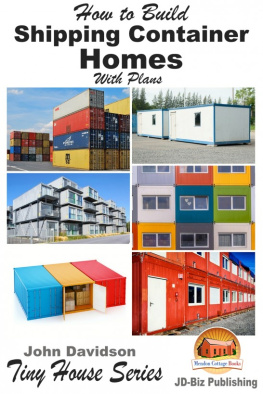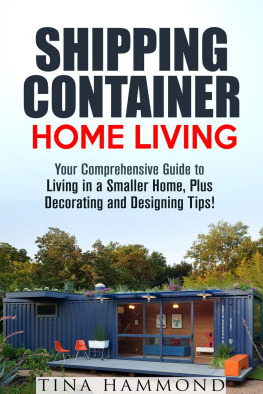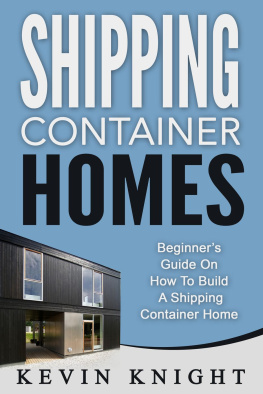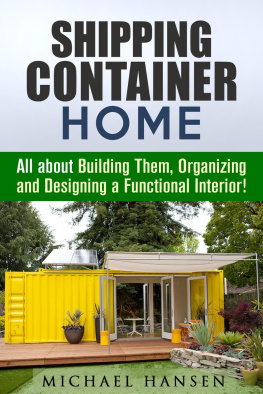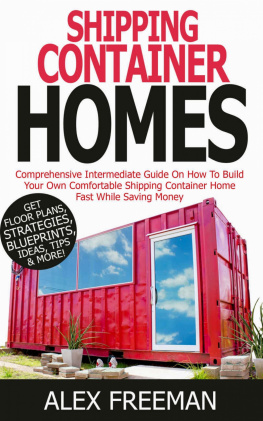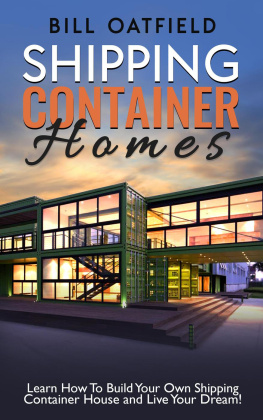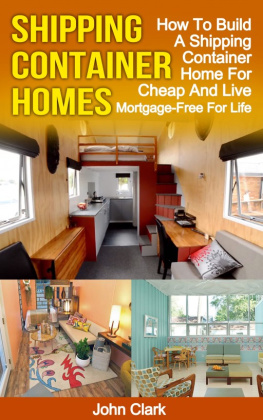How to Build Shipping Container Homes
With Plans

Plan Book Series
John Davidson
Mendon Cottage Books

JD-Biz Publishing
Download FreeBooks!
http://MendonCottageBooks.com
All Rights Reserved.
No part of this publication may be reproducedin any form or by any means, including scanning, photocopying, orotherwise without prior written permission from JD-Biz CorpCopyright 2016
All Images Licensed by Fotolia, Pixabay, and123RF.
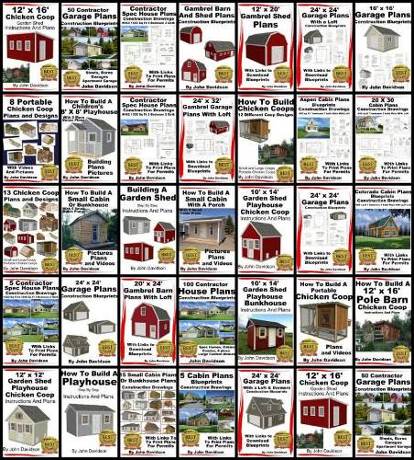
Download FreeBooks!
http://MendonCottageBooks.com
Table of Contents
ChapterOne
Introduction to Shipping Container Homes
Shipping container homes are houses that arebuilt using shipping containers. The strength, durability,availability, and the cost effectiveness of containers as buildingmaterial has made these types of homes popular in recent years.When you buy a container, it might appear as hollow boxes with nowindows or openings. However, these boxes are highly customizable;they can be stacked and welded together to create beautiful yeteconomical homes. The next section is about the pros and cons ofliving in a shipping container home.
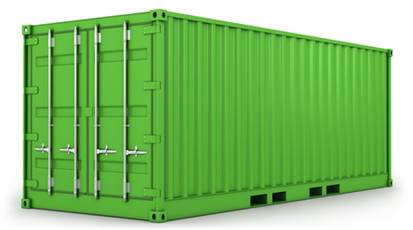
Advantagesof Shipping Container Homes:
1. The first advantage, is of course thecost; the cost involved in constructing a container home is muchless than the cost of building a conventional home (for the samespace and storage).
2. Container homes are eco friendly andsupport minimalist living; you will be using containers that are nolonger used in the shipping industry, thereby helping to recyclethem.
3. These containers are used for shippingheavy loads and thus are built to be durable and strong.
4. These homes can withstand extreme weatherconditions (hurricanes) due to their structural strength.
5. Containers can be stacked horizontally andvertically to create multistoried buildings.
Disadvantages of Shipping Container Homes:
1. The material used in the construction ofcontainers conduct heat very well. Thus temperatures drop and raisevery steeply within the containers
2. Due to the above reason, it is importantto insulate the containers and control the temperature.
3. Containers are also used to carry toxicand harmful substances. Thus, before buying a container, it isimportant to get it tested.
4. Most of the containers that are sold arefit for scrapping; this leads to the issue of tackling rust.
5. It is possible that solvents and harmfulpaints were used inside the containers, which if inhaled for longduration (living in the container) can be fatal.
6. Applying and obtaining a building permitfor container can be a major hurdle, as container homes are usuallynot allowed in residential zoning areas.
ContainerSizes and Specifications:
Shipping containers come in two sizes: 20feet and 40 feet.
The dimensions of a 20 container are: 20(length) x 8 (Width) x 86 (Height).
The dimensions of a 40 container are: 40(length) x 8 (Width) x 86 (Height).
From the above dimensions, the only variableis the length and choosing a 20 or 40 container depends on yourneeds and the number of people living with you. If you are planningto build a compact tiny house, a 20 container will suffice. Youcan also stack the containers vertically to create more space andprivacy. However, if you plan to stack two 20 containershorizontally, think again a 40 container is a betteralternative, as you will save money and effort used for welding two20 containers.
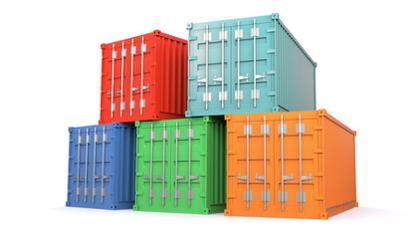
New or UsedContainer:
Once the size of the container is set, thenext step is to decide on buying a new or used container.
While buying new containers defeat the verypurpose of minimalist living and add to your expenses, but theyoffer you peace of mind, as they have never been used before forcarrying cargo. You can also get customized containers delivered toyour location talk to the container dealer about the deliverycharges. You can negotiate the container prices by allowing aone-time cargo shipment using your container.
Buying a used container is more economicaland environmental friendly. Before buying a used container, get ittested for toxic substances. It is always important to walk throughthe container to get a feel of the place you will be living in. Askyour dealer if it has a watertight seal and if it was ever damaged(however small it was). Talk to your dealer about the warranty,compare prices of different sizes, and ask about the deliverycharges of the unit to your place.
Permits andRegulations:
Even though you are building a containerhouse, you must still submit your plans to the localbuilding/planning authorities and get a permit. Your localauthorities will be the ones to inspect your building and issuepermits. It is a good idea to talk to the local authorities beforeyou proceed with the construction. When you talk to them, informthat you are planning to build a house with modular steel sectionsand mention the use of containers in passing. Prepare a list ofquestions that you want to ask; following are some pointers:
a. Find out about zoning restrictions
b. Ask about the footage area requirementsand restrictions (minimum and maximum area that is allowed)
c. Find out about the maximum heightallowed
d. Collect details about the list of drawingsand documents to be submitted for obtaining the permit
e. Check out the local building departmentwebsite for relevant information
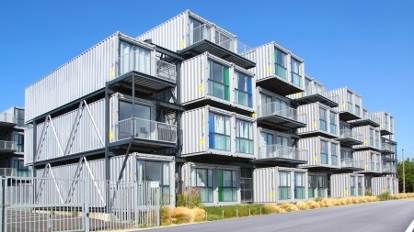
Student Housing Complex
ChapterTwo
Foundation for Shipping Container Homes
Foundation is the most important part of yourentire structure. Thus it is advisable to seek professional help indesigning your foundation. Foundations can be broadly classifiedinto 4 types:
1. Full basement
2. Submerged crawl space
3. Flush crawl space
4. Slab-on-grade
For each of the above foundation types,various construction methods can be used. Some of the methodsare:
a. Treated wood foundation
b. Precast concrete foundation
c. Cast in place concrete
d. Concrete block foundation
Before choosing your foundation type, youmust consider the structural load of your building along with thefollowing factors:
SiteConditions:
This plays a vital role in selecting the typeof foundation for your building. The main factors to consider hereare the water table, soil conditions, and the topography. It isimportant to observe and determine the ground water conditions. Ifyour site has a water table within 8ft depth from the surface, abasement foundation will leave your basement flooded. The onlyoption here is to build a slab-on-grade or crawl spacefoundation.

